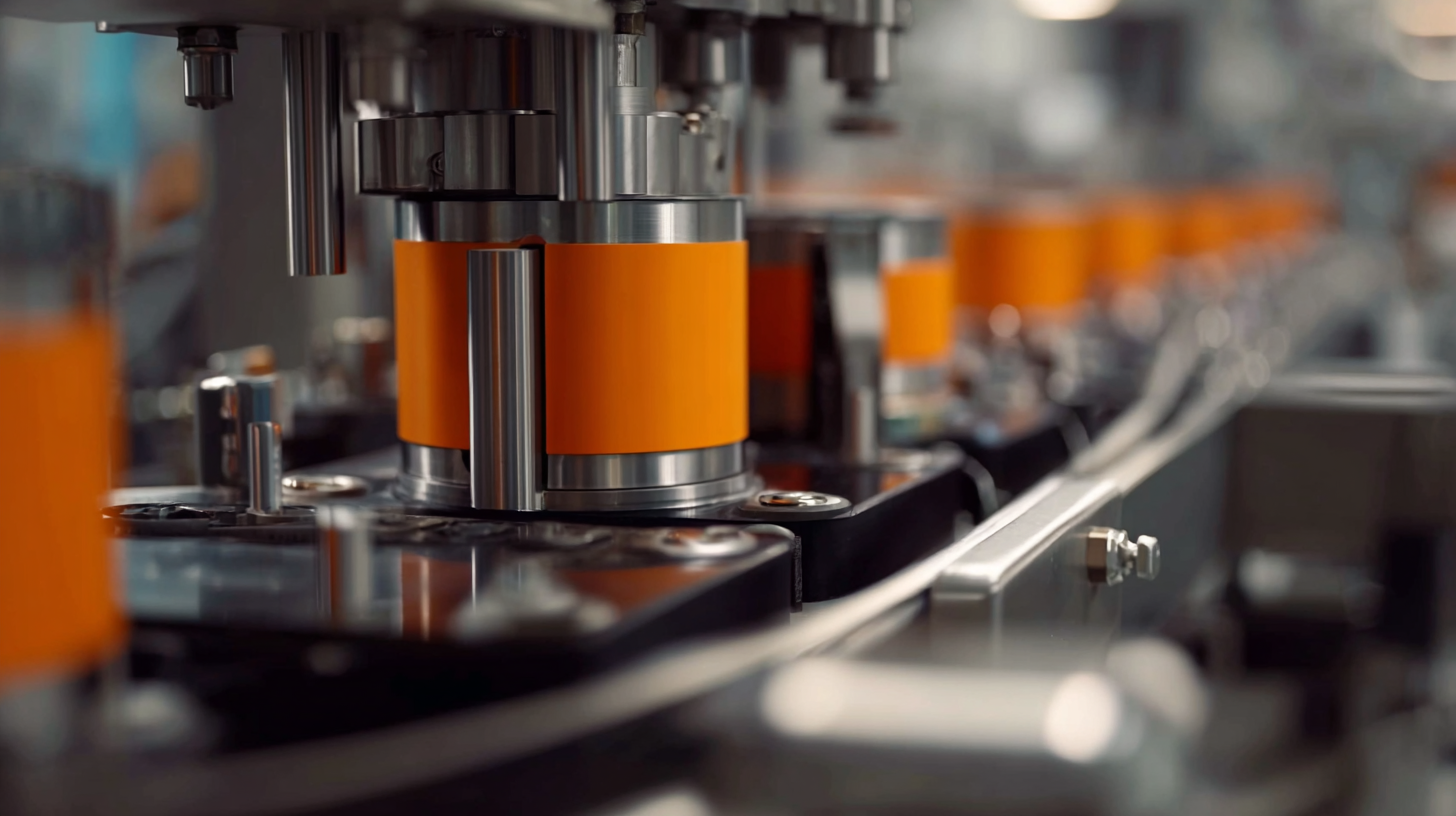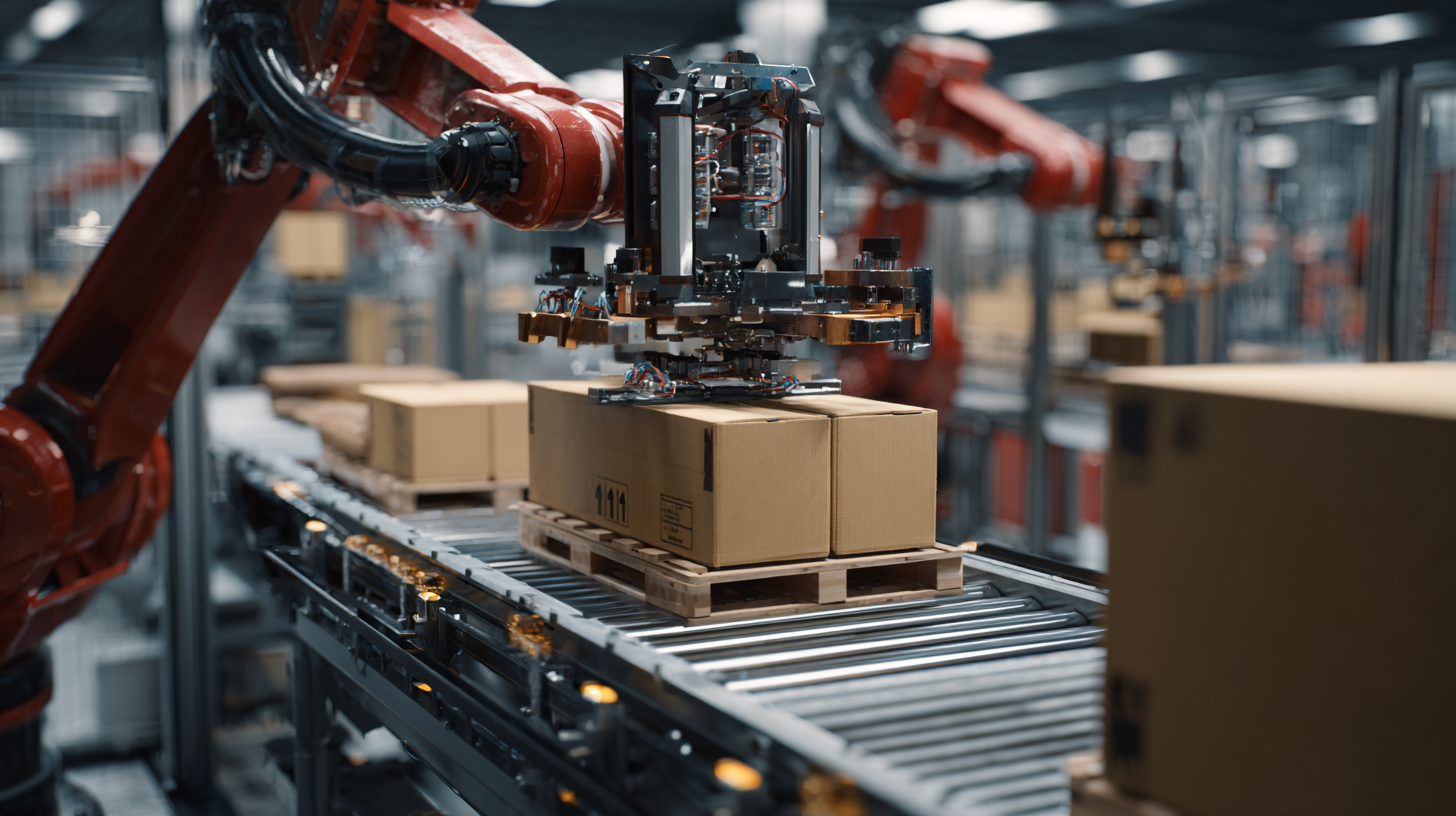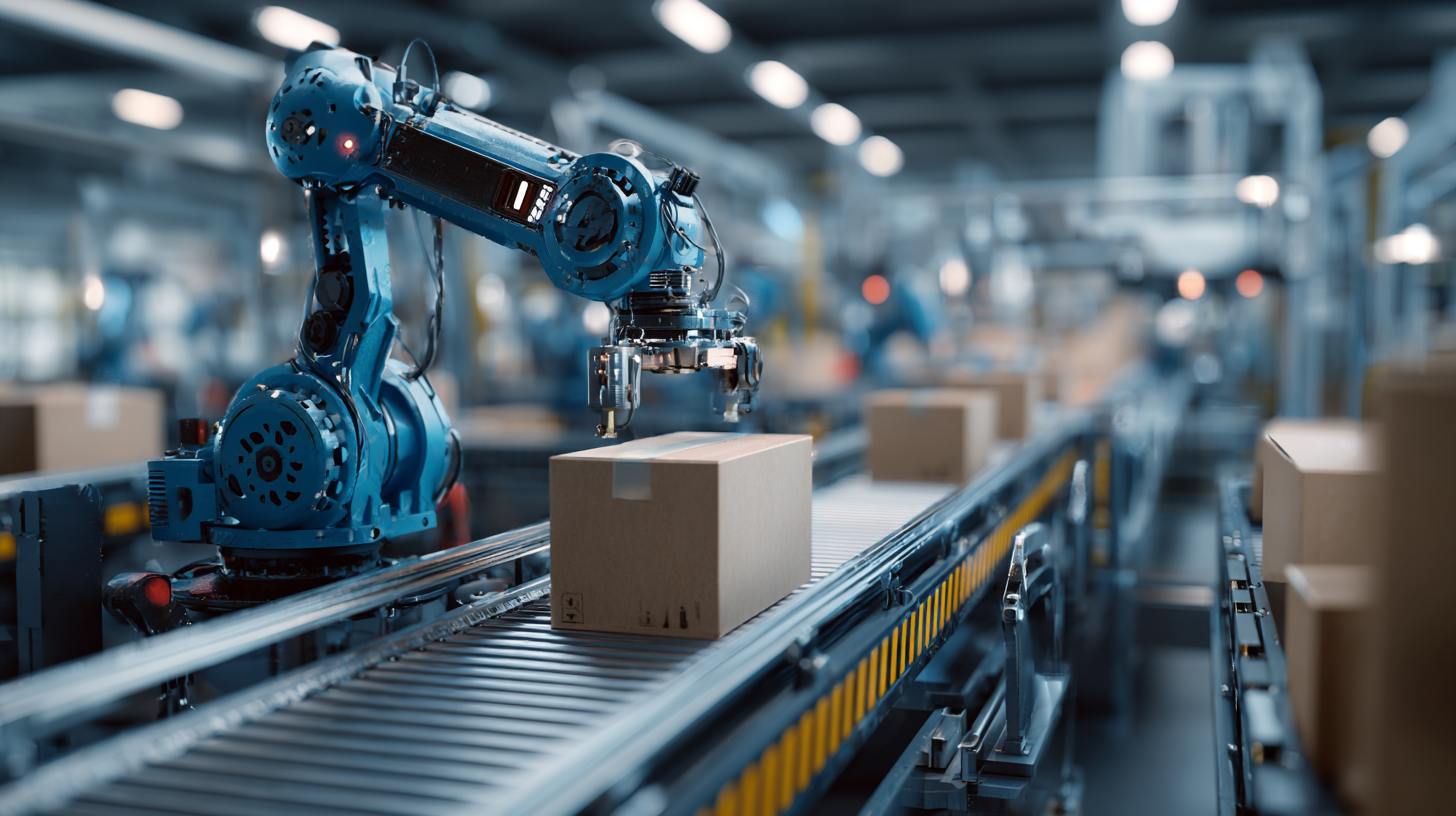Exploring 2025's Leading Alternatives in Best Packaging Machinery Technology
As the packaging industry continues to evolve, the demand for advanced packaging machinery is growing rapidly. According to a recent report by MarketsandMarkets, the global packaging machinery market is forecasted to reach USD 47.5 billion by 2025, growing at a CAGR of 4.8% from 2020. This surge highlights the crucial role that innovative technologies play in enhancing productivity, efficiency, and sustainability within manufacturing processes. In light of increasing consumer demand for quicker and more eco-friendly packaging solutions, exploring the leading alternatives in packaging machinery technology for 2025 becomes imperative. From automated systems to smart packaging solutions, the shift towards more adaptable and integrated machinery is setting new industry production standards, ensuring businesses remain competitive in a rapidly changing market landscape.

Innovative Trends in Packaging Machinery Driven by China's Manufacturing Upgrades
The packaging machinery industry is undergoing a revolutionary shift driven by China's advanced manufacturing upgrades. As one of the vital sectors within the manufacturing domain, it faces substantial challenges across various consumer goods, including food and beverages, pharmaceuticals, and electronics. The market for bagging machines is projected to reach approximately $5.75 billion by 2025, while the filling machine market is expected to attain around $8.12 billion during the same period, reflecting a compound annual growth rate of 5.02% from 2025 to 2032.
In recent years, intelligent and automated solutions have become integral to the development of packaging machinery. With the reinforcement of domestic substitutes and robust policy support, the sector is witnessing significant growth. The 2025 HOTELEX Shanghai Exhibition, scheduled from March 30 to April 2, 2025, will showcase innovative upgrades across five dimensions, illustrating the rapid evolution of the packaging landscape.
Tips:
1. For businesses looking to modernize their packaging processes, investing in automation technology can yield long-term efficiencies and cost savings.
2. Staying updated on industry trends and participating in trade exhibitions can provide valuable insights into emerging technologies and market dynamics.

Impact of Automation and Robotics on Packaging Efficiency in Global Markets
The packaging industry is undergoing a transformative shift towards increased efficiency and sustainability, largely fueled by advancements in automation and robotics. Packaging 4.0 leverages these technologies to enhance customization while reducing waste. By integrating AI and robotics into packaging processes, companies are not only streamlining operations but also adapting to the fast-paced demands of global markets. This evolution is essential for maintaining a competitive edge and meeting consumer expectations.
Tips for optimizing packaging operations include embracing automation to minimize labor costs and improve precision. Companies should also consider investing in AI-driven solutions to analyze data and drive decision-making processes. Another crucial step is to continuously assess and adapt packaging designs for greater sustainability, responding to the growing consumer demand for environmentally friendly practices.
Moreover, the adoption of soft robotics represents a significant advancement in this space, as these technologies can handle diverse packaging needs while reducing the risk of product damage. As manufacturers navigate the future, harnessing the unparalleled potential of automation and robotics will be key to achieving greater operational efficiency and market responsiveness.
Sustainability in Packaging Technology: Meeting 2025's Environmental Standards
As we approach 2025, the demand for sustainable packaging solutions has become more critical than ever. With environmental standards tightening globally, packaging technology is evolving to mitigate its impact on the planet.
Innovative materials such as biodegradable plastics and plant-based alternatives are taking center stage, promising to reduce waste and enhance recyclability. Companies that invest in sustainable practices not only meet regulatory requirements but also attract eco-conscious consumers who prioritize the environmental footprint of their purchases.
Furthermore, the integration of smart technology in packaging machinery is revolutionizing the industry by optimizing resource use. Energy-efficient machines are being developed to minimize power consumption, while automation ensures precise materials usage, reducing excess waste. This shift not only aligns with 2025's environmental standards but also boosts production efficiency. By embracing these advancements, manufacturers can position themselves as leaders in sustainability, paving the way for a greener future in packaging technology.
Analyzing Consumer Demand Shifts: How Packaging Machinery Must Adapt
As consumer preferences continue to evolve, the packaging machinery industry must adapt swiftly to meet new demands. The rapid consumer shift towards healthier options has resulted in skyrocketing demand for low-sodium, low-sugar, and low-fat products. As the fast-moving consumer goods (FMCG) packaging market is projected to grow from $823.83 billion in 2024 to $1.3408 trillion by 2032, marking a CAGR of 6.28%, companies must remain vigilant in innovating their packaging solutions. This is particularly crucial as traditional packaging methods may not resonate with the health-conscious consumer base.
Tip: Companies should invest in advanced packaging machinery that supports sustainable practices, such as recyclable and biodegradable materials, to appeal to environmentally aware consumers. As highlighted in recent reports, the flexible and modular packaging systems market is expected to exceed $225.8 billion by 2024, demonstrating the potential for companies that prioritize adaptability and sustainability in their packaging strategies.
The rise of new consumer demographics is also influencing packaging trends, with millennials and Gen Z valuing transparency and health more than previous generations. Innovations in packaging technology, particularly with top-load carton machines, must consider these shifts to retain market relevance. Adapting to these dynamics not only improves brand perception but can also capture a larger market share in a competitive landscape.

The Role of Smart Technology in Enhancing Packaging Machinery Performance
The evolution of packaging machinery technology in 2025 is heavily influenced by the integration of smart technology, which significantly enhances operational efficiency and accuracy. Reports indicate that the global smart packaging market is projected to reach approximately $39 billion by 2025, growing at a compound annual growth rate (CAGR) of nearly 7.1% from 2020. This growth demonstrates the industry's increasing reliance on advanced technologies like IoT and AI to streamline production processes. Smart machinery equipped with sensors and real-time data analytics allows manufacturers to monitor performance metrics, predict maintenance needs, and reduce downtime.
Moreover, the incorporation of smart technology helps in achieving greater sustainability goals within packaging operations. According to a study by MarketsandMarkets, the demand for sustainable packaging solutions is expected to surge, with the eco-friendly packaging market reaching approximately $500 billion by 2028. Packaging machinery that integrates smart technology can accommodate this shift by optimizing material use, reducing waste, and ensuring accurate filling and labeling. This transformation not only enhances productivity but also positions companies to meet consumer demands for environmentally responsible practices in the packaging industry.